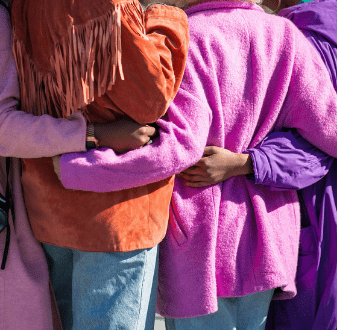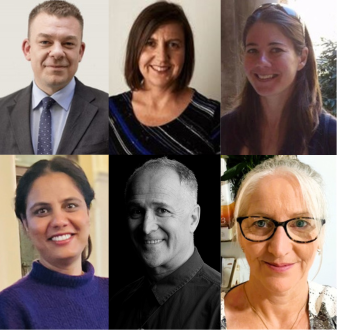Some of those issues are pressing problems that persist today. Along with a growing refugee crisis, healthcare inequality, rising income gaps, and climate insecurity.
So, how can research help solve some of our biggest social justice issues? Here’s how our researchers are addressing prejudice and bias.
Revolutionary design solutions
Dr. Sarah Elsie Baker is a New Zealand based Senior Lecturer and Research Fellow at the Media Design School in Auckland. She sees design as having a central role in creating awareness and change, especially when it comes to inequality.
“I see the potential for design to make change in terms of social justice. And that might be something very small, but it could also be something really big.”
Dr. Baker’s latest research is laser-focussed on gender justice and design. It unpacks the ways design reinforces gender norms and how designers can challenge these outdated gender hierarchies. Her findings will come together in a book intended for design education and will merge gender theory and queer theory with design research.
According to Dr. Baker, when design is framed through a gendered lens, the results are problematic.
“When Siri was first launched, obviously, they'd done some user testing, but really not enough. So, if you said to Siri, “you're a slut,” then Siri would reply, "I'd blush if I could."
“Obviously these are not the models of gender relations that we want everyone and young people especially to model,” she declares.
In her book, students and designers will have access to case studies that demonstrate good design practice in terms of representations of gender. There’s a rich tapestry of examples that include Indigenous women from Mexico to the creations of a Chinese-American designer.
Leaving the past in the rear
One of the key reasons gendered design outcomes occur says Dr. Baker is due to a real disparity when it comes to positions held by female designers in the workforce.
“In New Zealand, 65 to 70 per cent of design graduates are female depending on the discipline. But actually, only about 45 per cent of those get jobs in the industry. When you move on to more senior positions, around 10 to 20 per cent of Creative Directors are female.”
Dr. Baker says shedding the patriarchal norms that have shaped design practice throughout history is a good place to start being transformative.
“From a social perspective, the kind of binaries of masculinity and femininity influences men as much as women and non-binary people too. So, how you're supposed to be and how you're supposed to act influences lots of people quite negatively. Freedom from those binaries could be really wonderful.”
In the long-term Dr. Baker wants to see the proliferation of gender identity.
“Ultimately if you have a proliferation of something, it becomes meaningless in a way. Gender doesn't really matter in the end because there's so many different versions of who you can be.”
A field guide for fairness
Putting social justice into action is also the forte of Professor John Burgess from the Centre for Organisational Change and Agility (COCA). One of his research projects looks at best practice when it comes to implementing workplace programs around diversity, equity, and inclusion (DEI) initiatives.
This project focusses on the specific challenges of conducting research in this evolving area. Once the results are collated, the findings will form a field guide for other researchers to follow the best course of action.
“It covers a range of both research issues and public policy issues and has relevance to research public policy and to organisational practice,” explains Professor Burgess.
“The focus is largely on the workplace. To what extent is equity and diversity incorporated into workplace practices? What sort of support mechanisms are in place? Are these practices encoded through regulations, agreements, and so forth?”
For the past 15 years Professor Burgess has been studying the issues organisations have to address to solve inequities and injustice in the workplace. However, since his early research outputs the issue of diversity and equity has really expanded.
“We conducted our research looking at gender in the workplace and equal employment opportunities for women. And that was largely the extent of research on diversity at that time. Since then, it's expanded, recognising that there are many more aspects of diversity across individuals and within the workplace.”
For DEI practices to be fit for purpose for today’s workplace, Professor Burgess says we need to start by looking at the covenants Australia signed up to as our compass.
“We signed up to various international codes of practice. And under those we recognise that individuals shouldn't be discriminated against on the basis of personal characteristics, such as age, gender, ethnicity, and religion.”
“You've got to consider how can those particular international obligations be encoded and put into place within everyday living, including work and the workplace.”
Listen to Research That Matters to hear more about the research of Dr. Baker and Professor Burgess in Episode 9: Economic & Social Benefits.
Research That Matters, is a 9-part podcast series featuring researchers from Torrens University Australia, who are working to solve complex global problems and to propel innovation. Hosted by Clement Paligaru and produced by Written & Recorded.
Find all episodes of Research That Matters at https://www.torrens.edu.au/research/research-that-matters-podcast




